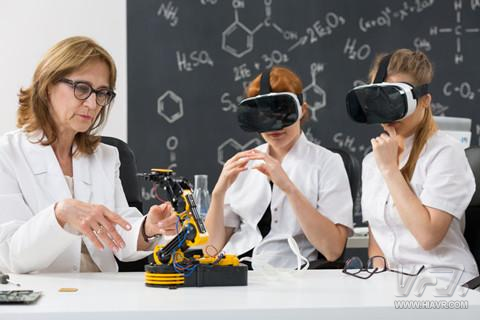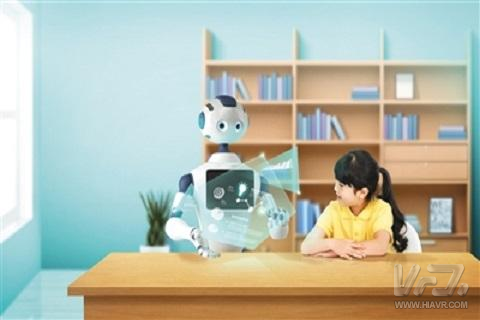With the increasing influence of technology on the education industry, we have been able to take a glimpse of the gradual evolution of education.
Technology is in constant transformation, like an active particle, which can change the status of any physical space it enters. A glimpse of a vibrant digital world can explain how technology has brought new meaning to the education industry.
Technology has changed everything in our lives, whether it is what we used to think we knew or what we used to be. It also helps us explore new dimensions to achieve our goals more efficiently. This is also true in education, where science and technology have changed the foundation of traditional learning and expanded it into new, more advanced learning methods.
The rapid growth of Internet connectivity has been an important catalyst for the development of online learning. In India, the emergence of a large number of educational technology platforms is slowly eliminating barriers to quality education. With 400 million primary and secondary students in India, start-up startups can create micro-learning tools for self-study, effectively mobilize their product content, and create job opportunities.
According to a recent report by Google and KPMG, online education in India will increase by about 8 times in the next five years. This will have a major impact on the educational technology market, which is expected to reach $1.96 billion by 2021.
With the help of technology, education has crossed the borders and opened up a world of opportunities for students. From simple information sharing to instant access to learning projects at any time, anywhere with the help of e-mail and cloud applications, this is how 2018 technology will change the education industry:

First, virtual reality and gamification
Do you know that passive teaching methods can lead to a conceptual rate of knowledge mastery of less than 30%? On the other hand, participatory methods can make mastery rates as high as 90%. What fails in our traditional education system is that we are still focusing our efforts on outdated practices, allowing students to participate passively, and the knowledge acquisition rate is only at the lowest level.
Technology is actively responding to and solving the aforementioned problems. Augmented reality, virtual reality, and gamification enable students to feel immersive through graphical simulations, thereby extending the concept of experiential learning. This can increase student engagement and retention of knowledge, while using animations can make it easier for students to understand complex theories. Such technology is more likely to change the rules of the game in time, because in 2018 it has begun to bear fruit.
Second, data analysis
The amazing thing about big data and data analysis is that they provide educators with new teaching methods. The existing data points are being extracted to gain deeper insights that affect the overall learning growth of a student. For example, Hewlett-Packard collaborated with a non-governmental organization called the Aksala Foundation to improve education in Karnataka.
Since 2006, Aksaland has collected key data related to the teaching resources, facilities, and records of more than 40,000 schools. Although in many cases these records are incomplete, data scientists can draw critical observations from these records. This includes the best book-to-student ratio, which is based on the optimal ratio of students to teachers.
The study also pointed out that girls aged 11 to 14 have lower enrollment rates. In addition, the analysis soon revealed that with the increase in the availability of independent toilets, the drop-out rate for this particular group of people will also decrease.
Despite the clutter of the existing datasets, these are some of the interesting conclusions of the collaborative experiment, and they are still derived from leveraging techniques. With the increase of digitization and the availability of more abundant data points, these conclusions will provide more solutions to the long-term problems existing in the field.
Third, education based on cloud technology
To create a successful digital learning experience, schools need to improve information technology capabilities and enterprise infrastructure. Although this technology exists in some form, the real challenge comes from scalability. The biggest advantage of cloud technology is that they create a centralized repository of knowledge for students and teachers. This is a teacher-student collaboration that goes beyond traditional classroom interaction.
Cloud-based education has become a phenomenon because it ensures the continuity of learning, regardless of the geographical location of the student. In addition, it ensures that the required data sets are used to process and gain deeper insights for a more effective learning experience.
Cloud-based technology also allows educators to increase their teaching influence without purchasing any essential basic education equipment. This, in turn, will reduce service costs while allowing education to generate more value and benefit students.

Fourth, machine learning and artificial intelligence
People may ask how artificial intelligence affects students’ learning ability and improve human intelligence. Artificial intelligence is changing the education and training industry. Artificial intelligence-driven algorithms create behavioral models by studying individual data sets. Based on the model, these algorithms can deepen the understanding of students' strengths and weaknesses, and design a unique personalized learning curve.
Machine learning is a technique for building artificial intelligence that allows the system to learn individual actions and skills without explicit programming. As for different behavior patterns, learning progress reports, and annual results, the system will automatically establish relationships between different learning methods. In addition, they also create personalized training paths to meet the needs of each student. Students will eventually benefit from learning at the best speed, resulting in the best learning outcomes.
Therefore, the impact of science and technology on education is increasing. This provides us with an opportunity to give us a glimpse of the gradual development of the autonomous learning field. Today, if we can achieve this goal in an outdated education system, imagine what they will achieve once the next generation adopts advanced methods of education. Since the popularity of these systems is increasing year by year, we do not have to wait longer to see the results.
JSVape Vape,JSVape Vape Pen,Jsvape Disposable E Cigarette,JSVape Disposable Vape,JSVape Vape Kit
Tsvape E-cigarette Supplier Wholesale/OEM/ODM , https://www.tsecigarette.com
